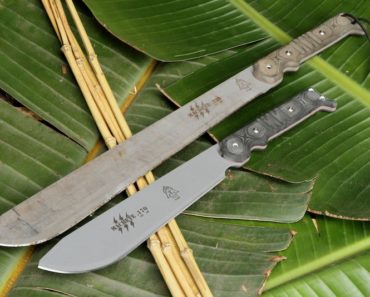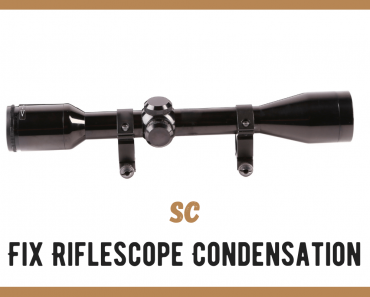Looking back over the things I’ve written in the last several years, I’m surprised that I haven’t written more about self-defense and shooting in general. Last week’s article about clearing your home is one of very few articles that talks about the need to defend home and family. Yet if we’re honest with ourselves, we’re all at risk of our homes being invaded. That risk only increases in a time of crisis, when people are desperate for food and other basic supplies.
Guns aren’t the only way to defend yourself; but in this modern world and especially here in the United States, where there are an estimated 400 million privately-owned firearms, it’s the most sensible means. The old adage about not bringing a knife to a gunfight still applies and can be expanded to include swords, bows and tomahawks too. Anyone breaking into your home to get what you have is likely to be carrying a gun, even if it is just to intimidate you. About the only exception to that would be a burglar who is coming in when they know that nobody is home.
I’ve been shooting most of my life, since my dad first taught me at about the age of six. He gave me my first gun for my 12th birthday, the same day that I received my Hunter’s Safety Certificate (in Colorado). I’ve legally carried concealed for about 15 years and there may have been a few times I was carrying before that. Through my life, I’ve stopped four crimes from being committed against my person or against family members by being armed. Fortunately, I haven’t had to fire a shot yet; just being armed was enough to make the potential criminal decide it was a good time to be elsewhere.
The Bad News
Shooting is a skill, and like any skill, it takes training and practice. The idea that you can just pick up a gun and shoot someone in their X-ring, without considerable time on the range, is an invention of Hollywood, just like fast draw gunslingers meeting at high noon on main street in the Old West.
The big problem with using guns for self-defense, is that the adrenalin running through your bloodstream during such a life-threatening situation is going to play havoc with your shooting ability. That adrenalin is there to fortify the fight of flight defense mechanism; but in the case of fighting with guns, it hurts more than helps. The average person’s fine motor skills are affected by that adrenalin to the point where their shooting ability, especially their accuracy, is degraded by 80 percent!
What that means is that a person who can shoot a one-inch group with their pistol will find themselves shooting a four-inch group at the same distance. That’s not bad; but what if you normally shoot a four-inch group? That will grow to a 20-inch group. If the best you can do is an eight-inch group, it will increase to 40-inches! In other words, unless you’re a really good shot, you’re more likely to miss the bad guys, than to hit them.
Before I finish with the bad news, let me add on one more thing. That is, any time you’re involved in a life-fire situation, you’re likely to be shooting at a moving target. Those are much harder to hit. If you’re smart, you’ll be moving as well, making yourself harder to hit. Of course, that wreaks havoc with your ability to shoot accurately as well.
Should You Carry?
This is a personal decision, but my vote is yes, for most people. Of course, a lot is going to depend on where you live. Some states are still hanging on to their gun restrictions and probably will be for the foreseeable future. But assuming you don’t live in one of those states; there shouldn’t be much restriction against you carrying, assuming you get the proper permit.
The one exception I would make is for people with anger, drinking, or drug issues. Carrying has to mean carrying responsibly and if you can’t control your temper, you don’t want to be carrying a gun. Too many shootings happen, especially between friends and family members, when alcohol is involved. That’s why many states which allow concealed carry, still prohibit it in bars.
The other restricting issue might be your work. Many workplaces don’t allow employees to carry. We want to be legal in what we do, so you need to take that into account. While there have been cases of people using their concealed handguns to stop a crime while at work, many of those people lost their jobs for doing the right thing.
Step 1 – Work on Accuracy
The first place to start, is working on your shooting accuracy. That means getting your shot group size down. If you’re able to shoot a small group on the range, you’ll be able to do better when the adrenalin is flowing. Ideally, you want to be able to do that tight group in rapid fire, which means one shot per second. But don’t concentrate on speed, concentrate on accuracy. The speed will come naturally as you improve.
For your practice, pick a distance and stick with it. Most self-defense shooting happens within 20 feet, so that’s a good distance to practice at. If you can shoot accurately at 20 feet, you’ll be able to shoot accurately at targets closer than that.
Ultimately, you want to be able to do those tight groups with your carry gun. but that doesn’t mean that you need to start with your carry gun. I carry a .45 ACP, so every shot is like throwing 50₵ downrange. That gets expensive quickly. I started out working on my shooting with a .22LR and worked my way up to a 9mm, before starting to work on accuracy with my .45.
Step 2 – Making Tactical Decisions
Any active shooter incident is going to force you to make a number of tactical decisions, quickly. These include things like which target to engage first, how to proceed from there, utilizing cover and concealment, moving from target to target and making the shoot/no shoot decision. All of that happens extremely quickly, forcing you to react without really having time to think. You need to know how you’re going to react in any give situation, before you find yourself there.
There are a couple of different things you can do here, to help you in this process. The first is a mental exercise, thinking through what you would do in a variety of different scenarios. To make this more realistic, do it on the fly, when you are away from home; taking the situation you are in and asking yourself what you would do if some other patron of that business drew a gun or if someone walked in the door and started shooting. If you’re ever in such a situation, it will probably be different than your practice scenarios; but that practice will still help you to prepare.
Besides those mental exercises, see if you can find a local shooting range that has a booth for video training for these scenarios. These booths confront you with video of a variety of different possible scenarios, forcing you to decide whether or not to pull the trigger. You get graded on how many bad guys you take down, compared to how many innocent bystanders you shoot.
Step 3 – Shooting at Moving Targets
The next thing to work on is shooting at moving targets. No criminal is likely to stand there like a target, asking to be shot. They’ll most likely be moving, whether that is to get closer to their target or to run away. Regardless, they’re much harder to shoot when they are moving, especially if they are moving across your sight.
Anyone who has gone bird hunting or skeet shooting can tell you that the way to hit a moving target is to lead the target. But knowing just how much to lead that target can be extremely challenging, especially in a situation where there might be innocent bystanders in the arena. The last thing any of us wants to do is hit an innocent, just because we miss the target we’re trying to hit.
Making matters worse, it can be extremely difficult to find anyplace where you can practice shooting at moving targets. Even if your local shooting range has tactical shooting events, there’s no guarantee that they employ any sort of moving target. If they do, get in on that, as it’s about the best practice you can find.
Step 4 – Avoiding Getting Shot
This may not seem like a part of shooting practice; but it’s actually very important; even more important than how well you can shoot. You’re not going to accomplish anything to help defend yourself or anyone else, if you get shot. So, your first responsibility is to avoid becoming a target. That can be difficult, especially if you’re holding a gun.
There are two basic ways of avoiding getting shot, other than just running away. The first is using cover and concealment and the second is to move while shooting. If you’re not behind good cover, blocking their shots, then you should be moving to cover.
But how can you practice this? Few shooting ranges will allow this sort of shooting, unless it is in a tactical shooting event. It’s just too dangerous to have people moving around and shooting, when the range is full of shooters. The same space, when used for a tactical shoot, will only have one shooter at a time, helping to ensure that the situation remains safe.
Fortunately, we can practice both moving and fining cover, without having to be on a shooting range. But shooting while moving is a whole other ball game. About the only place you’re going to get to do that, is at an outdoor range, with nobody else around. You can practice moving with a gun at home, but that’s not the same as shooting while moving.
However, there is one way of practicing shooting while moving at home, which is safe and legal. That’s to use a laser practice target. There are several different brands of these on the market, sold with the idea of giving people a way to practice shooting at home. Because it is safe and there’s nobody else around, they can also be used to practice things you can’t practice at your local range, like shooting while moving.
Step 5 – Get Accustomed to Carrying
It takes time to become accustomed to carrying a pistol all the time. The extra weight of your pistol and spare magazines will try to pull your pants down. That’s especially bad if you’re overweight. You’ve got to be constantly aware of the presence of that gun, so that you don’t let it show. You also have to ensure that nobody can take it from you; the worst infamy for one who carries. On top of that, you’ve got to check the signs on buildings, as you enter, making sure you’re not carrying someplace where it is prohibited.
Even so, it’s worth it. You may never have to use that gun and I hope you won’t. But, as I’ve said, I’ve had four different situations where carrying stopped a crime. That makes it worthwhile, as far as I’m concerned. I’m able to keep my family safe; and that’s my job.






![Scavenging, Dumpster Diving Through The Apocalypse [PODCAST] Scavenging, Dumpster Diving Through The Apocalypse [PODCAST]](https://survivalcove.com/wp-content/uploads/2022/03/Survival-and-Basic-Badass-Podcast-370x297.jpg)





















